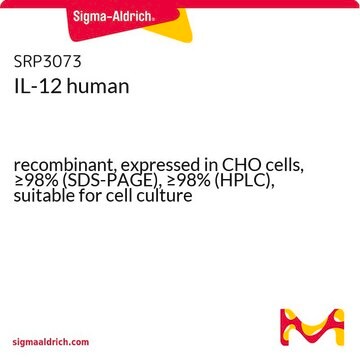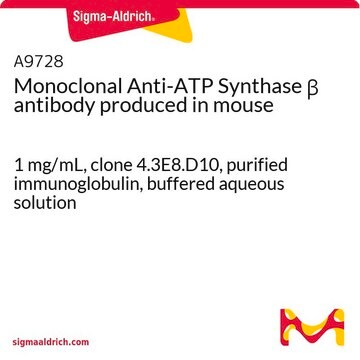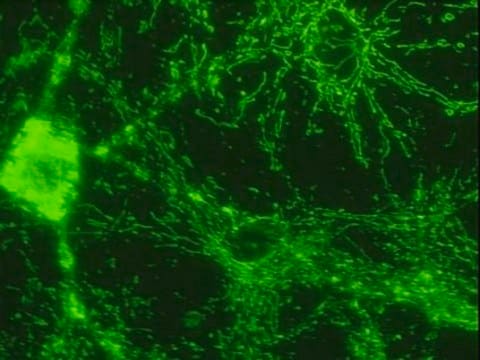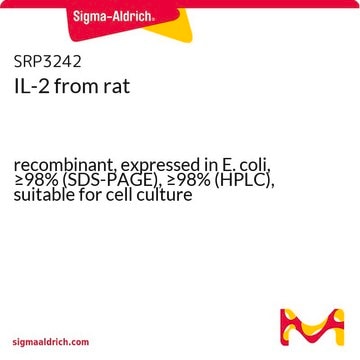MABS1304
Anti-ATP Synthase subunit β Antibody, clone 11/21-7-A8
clone 11/21-7-A8, from mouse
Synonym(s):
ATP synthase subunit beta, mitochondrial, ATP Synthase subunit β, beta-F1-ATPase
About This Item
Recommended Products
biological source
mouse
Quality Level
antibody form
purified immunoglobulin
antibody product type
primary antibodies
clone
11/21-7-A8, monoclonal
species reactivity
human, mouse, rat
technique(s)
ELISA: suitable
dot blot: suitable
immunocytochemistry: suitable
western blot: suitable
isotype
IgG1κ
NCBI accession no.
UniProt accession no.
shipped in
wet ice
target post-translational modification
unmodified
Gene Information
human ... ATP5B(506)
General description
Immunogen
Application
ELISA Analysis: A representative lot detected His-tagged full-length human ATP Synthase subunit β (beta-F1-ATPase) recombinant protein by direct ELISA (Acebo, P., et al (2009). Transl Oncol. 2(3):138-145).
Dot Blot Analysis: A representative lot detected ATP Synthase subunit β (beta-F1-ATPase) by Dot blot using His-tagged full-length human beta-F1-ATPase recombinant protein or HepG2 lysate (Acebo, P., et al (2009). Transl Oncol. 2(3):138-145).
Western Blotting Analysis: A representative lot detected ATP Synthase subunit β (beta-F1-ATPase) in human hepatoma HepG2, murine hepatoma Hepa 1-6, and normal rat liver epithelial C9 (Clone 9) cells.
Western Blotting Analysis: A representative lot detected ATP Synthase subunit β (beta-F1-ATPase) expression in various cancer patients tissues (Acebo, P., et al (2009). Transl Oncol. 2(3):138-145).
Western Blotting Analysis: A representative lot detected ATP Synthase subunit β (beta-F1-ATPase) downregulation in HCT116 human colon cancer cells in response to AMPK pathway activation upon oligomycin or AICAR treatment (Martinez-Reyes, J., et al. (2012). Biochem J. 444(2):249-259).
Signaling
Developmental Signaling
Quality
Western Blotting Analysis: 0.5 µg/mL of this antibody detected ATP Synthase subunit β in 10 µg of HepG2 cell lysate.
Target description
Physical form
Storage and Stability
Other Notes
Disclaimer
Not finding the right product?
Try our Product Selector Tool.
Storage Class Code
12 - Non Combustible Liquids
WGK
WGK 1
Flash Point(F)
Not applicable
Flash Point(C)
Not applicable
Certificates of Analysis (COA)
Search for Certificates of Analysis (COA) by entering the products Lot/Batch Number. Lot and Batch Numbers can be found on a product’s label following the words ‘Lot’ or ‘Batch’.
Already Own This Product?
Find documentation for the products that you have recently purchased in the Document Library.
Our team of scientists has experience in all areas of research including Life Science, Material Science, Chemical Synthesis, Chromatography, Analytical and many others.
Contact Technical Service








